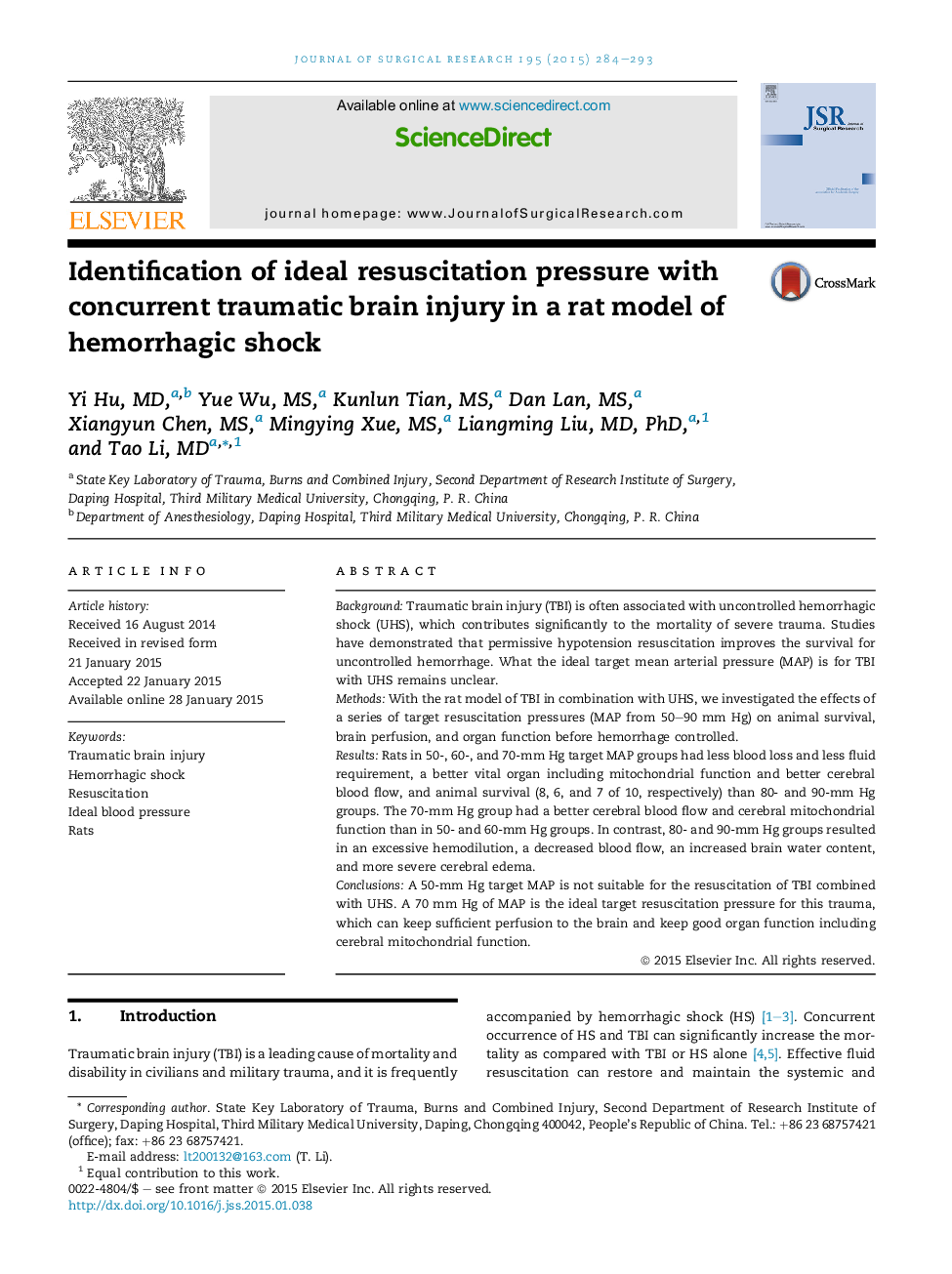| Article ID | Journal | Published Year | Pages | File Type |
|---|---|---|---|---|
| 4299900 | Journal of Surgical Research | 2015 | 10 Pages |
BackgroundTraumatic brain injury (TBI) is often associated with uncontrolled hemorrhagic shock (UHS), which contributes significantly to the mortality of severe trauma. Studies have demonstrated that permissive hypotension resuscitation improves the survival for uncontrolled hemorrhage. What the ideal target mean arterial pressure (MAP) is for TBI with UHS remains unclear.MethodsWith the rat model of TBI in combination with UHS, we investigated the effects of a series of target resuscitation pressures (MAP from 50–90 mm Hg) on animal survival, brain perfusion, and organ function before hemorrhage controlled.ResultsRats in 50-, 60-, and 70-mm Hg target MAP groups had less blood loss and less fluid requirement, a better vital organ including mitochondrial function and better cerebral blood flow, and animal survival (8, 6, and 7 of 10, respectively) than 80- and 90-mm Hg groups. The 70-mm Hg group had a better cerebral blood flow and cerebral mitochondrial function than in 50- and 60-mm Hg groups. In contrast, 80- and 90-mm Hg groups resulted in an excessive hemodilution, a decreased blood flow, an increased brain water content, and more severe cerebral edema.ConclusionsA 50-mm Hg target MAP is not suitable for the resuscitation of TBI combined with UHS. A 70 mm Hg of MAP is the ideal target resuscitation pressure for this trauma, which can keep sufficient perfusion to the brain and keep good organ function including cerebral mitochondrial function.
